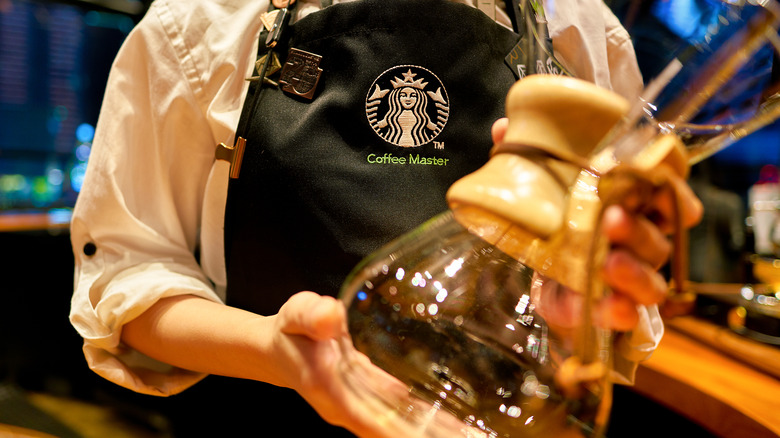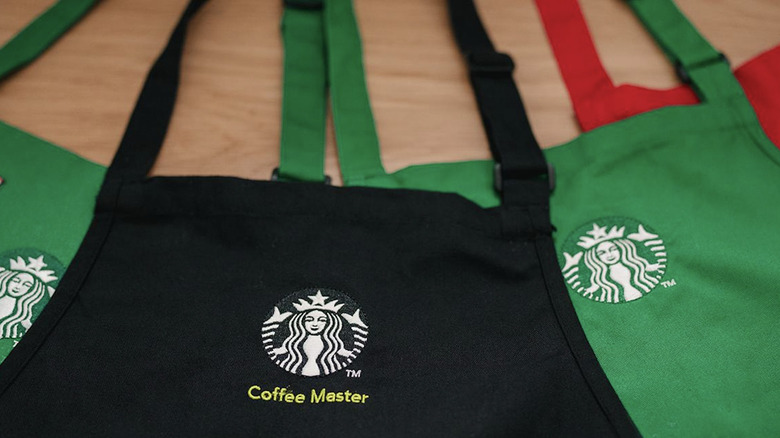Why You Might See More Black Aprons At Starbucks Soon
Of all the years they have been in business, 2004 was a big one for Starbucks. The coffee chain was slinging caramel Frappuccinos at well over 8,000 locations around the world (a huge expansion from its humble origins in Seattle's Pike Place Market), but a timeline of the brand's journey shows more than just retail growth. The year also marked the first Starbucks Farmer Support Center in San José, Costa Rica, which has developed into a lasting program that allows Starbucks agronomists to "build upon traditional growing methods to help farmers improve both the quality and profitability of their crops." In 2004, Starbucks also opened its first location in France and debuted its Starbucks Coffee Master program, a six-month training course that turns average baristas into bonafide coffee experts.
To delineate these masters of the craft from their counterparts, Starbucks gives them a black apron as opposed to the standard green. In fact, there's a whole spectrum of Starbucks apron colors, all with different meanings, using embellishments to show off the various achievements of its employees, including purple ones for those who compete in the brand's Barista Championships. In a May 2 public release, Starbucks announced that customers will be seeing more black aprons behind the counter as its Coffee Master program returns to North America.
Starbucks employees rallied for the return of the Coffee Master program
Every Starbucks barista receives basic training and an overview of the brand's coffee-making ethos, and the green apron they're given on their first day tells you they know how to operate an espresso machine far more adeptly than the average human. But if you see a Starbucks barista in a black apron, it means they've graduated from the brand's Coffee Academy and can probably answer your most obscure bean questions while they brew your caffeinated beverage of choice. In a promotional video for the program, a senior VP of the brand explains that the program teaches students about the "three pillars" of the Starbucks process, which include "origins and ethical sourcing, roast and blend, and brew and craft."
QSR reports that the revival of the program came from Starbucks employee feedback during interim CEO Howard Schultz's nationwide "listening tour." One barista who completed the program explained that the special aprons are a source of pride. "I remember when I first started working at Starbucks as a barista, the first thing set on my mind was learning everything I could about coffee so I can wear the black apron," she said.
In addition to the return of the program, Starbucks announced that a few lucky Coffee Masters will be selected for a trip to Hacienda Alsacia, the Starbucks coffee farm in Costa Rica that the brand describes as "the first ten feet of the bean to cup journey."

